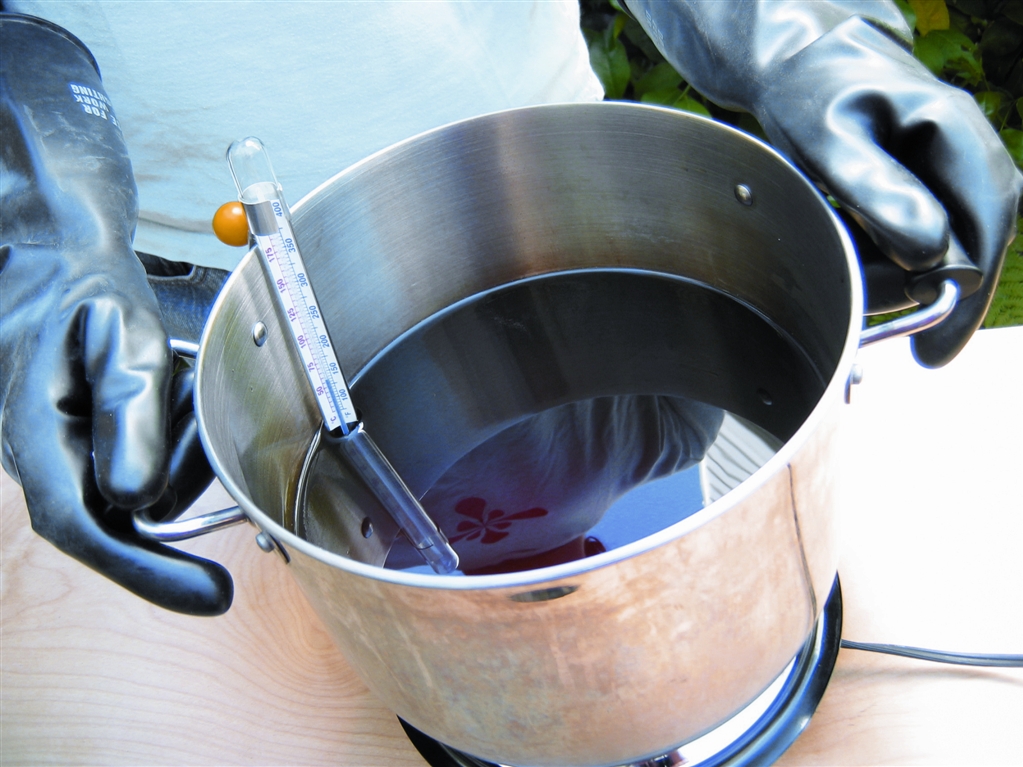Convert vegetable oil into a liter of biodiesel fuel.

It’s easy to make a small batch of biodiesel that will work in any diesel engine, from a model airplane engine to the family car. You don’t need any special equipment — an old juice bottle will serve as the “reactor” vessel — and on such a small scale you can quickly refine your technique and perform further experiments. After a few liters’ worth of experience, you’ll know if you’ve been bitten by the biodiesel bug.
The principle behind biodieseling is to take vegetable oil (either new or used), and process it into a fuel that’s thin enough to spray from a regular diesel engine’s fuel-injection system. This is done chemically, by converting the oil into two types of compounds: biodiesel, which shares the original oil’s combustibility, and glycerin, which retains the oil’s thick, viscous properties. Drain away the glycerin, and you’re left with a fuel that you can pour into any diesel vehicle with no further modification.
Once you get to the far side of the learning curve, making biodiesel is very much like cooking. In fact, a commercial biodiesel production plant shares more in common with a large-scale bakery than a petroleum refinery. There’s organic chemistry involved in baking a cake, but most bakers wouldn’t consider themselves organic chemists.
Steps
Step #1: Biodiesel Homebrewing Safety
- While biodiesel is safe to handle and store, the homebrewing process involves flammable, poisonous, and caustic chemicals, alcohols, and lye.
- Keep all chemicals clearly labeled, sealed, and out of reach of children and pets. When handling methanol and lye, wear long sleeves, safety glasses, and gloves made out of nitrile — or, even better, PVC.
- Wash the gloves after each use, and be careful not to touch your skin or eyes. Keep a water hose nearby in case of skin contact. Methanol can be absorbed through the skin, so wash immediately with water if contact occurs. Immediately flush lye off skin with water or vinegar.
- Methanol fumes are poisonous, so wear a mask, or hold your breath while pouring, and work outside or with good ventilation
Step #2: Filter and De-water your oil
- If you’re using new oil, you can skip to Step #5. But if you’re starting with waste oil from a restaurant fryer, it will contain food particles, water, and free fatty acids (FFAs) — contaminants that you need to remove or adjust for. The FFAs make the oil more acidic, (a.k.a. rancid), which counters the effect of the lye.
- You can compensate for this by adding more lye into the main reaction later, but you need to perform a titration test beforehand in order to determine how much extra lye you’ll need.
Step #3:



- Start with more than one liter of oil, since the following steps will slightly reduce your oil’s volume.
- Warm the oil to about 95ºF in a pot on an electric hot plate (don’t use a gas burner, here or anywhere else in this project), then filter it through a few layers of cheesecloth in a funnel (or use a coffee filter).
Read More Info
No comments:
Post a Comment